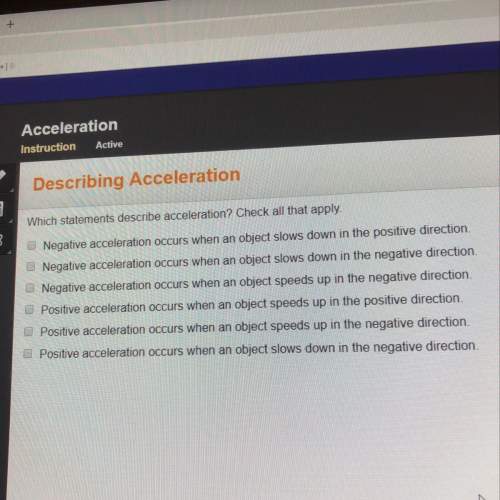Ahand-driven tire pump has a 2.50 cm diameter piston and a maximum stroke of 31.0 cm.
(a) how...

Ahand-driven tire pump has a 2.50 cm diameter piston and a maximum stroke of 31.0 cm.
(a) how much work (j) do you do in one stroke if the average gauge pressure is 2.40 multiplied by 105 n/m2 (about 35 psi)? (you may consider this an isothermal process.)
(b) what average force(n) do you exert on the piston, neglecting friction and gravity?
give me the steps.

Answers: 1
Other questions on the subject: Physics

Physics, 21.06.2019 17:20, kayelynn003
If the force on an object is in the negative direction, the work it does on the object must be [2 points a) negative. b) positive c) the work could be either positive or negative, depending on the direction the object moves
Answers: 1

Physics, 22.06.2019 16:00, 6FOOT
The electric potential v is constant everywhere within a certain region of space. which statement below is true? the choices are: the electric field is also constant (but not zero) within the region. a charged particle placed within the region will experience an electric force. the electric field is zero everywhere within the region. the electric field varies from place to place within the region.
Answers: 2

Physics, 23.06.2019 01:30, ayeletstrauss
The process of a material going through a change of state from a gas to a liquid
Answers: 2

Physics, 23.06.2019 02:50, raekwonpowell10
Orque can be calculated by multiplying the force (n) applied at 90∘ to the lever arm at a distance (m) from the pivot point (point of rotation), the compound si unit for the torque is n⋅m. if the force (at 90∘ to the lever arm) applied is 15 n and it is applied at 2.0 m from the pivot point (point of rotation), what is the torque on the lever?
Answers: 2
Do you know the correct answer?
Questions in other subjects:


Mathematics, 11.04.2021 02:20


Chemistry, 11.04.2021 02:20












